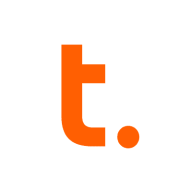

Teradata and Cisco Webex Experience Management are enterprise-level tools competing in analytics and customer experience solutions. Teradata is favored for its data analytics capabilities, while Cisco Webex Experience Management leads with its customer experience features.
Features: Teradata provides scalable data warehousing, sophisticated analytics, and seamless integration capabilities. Cisco Webex Experience Management highlights customer experience with intuitive analytics and feedback mechanisms. Teradata focuses on data-centric solutions, whereas Cisco prioritizes enhancing customer interactions.
Ease of Deployment and Customer Service: Cisco Webex Experience Management offers a streamlined deployment process and extensive support for easy installation and usage. Teradata, although offering solid support, involves a more complex setup due to its intricate data handling solutions. Cisco Webex is seen as more user-friendly for deployment and ongoing customer service.
Pricing and ROI: Teradata requires a higher initial investment, promising significant long-term ROI with its powerful analytics capabilities. Cisco Webex Experience Management is generally more cost-effective for initial setup, providing fast ROI through enhanced customer interactions. The decision between these products hinges on business needs concerning upfront investment and specific priorities in data handling or customer experience enhancement.
| Product | Market Share (%) |
|---|---|
| Teradata | 1.6% |
| Cisco Webex Experience Management | 1.6% |
| Other | 96.8% |

| Company Size | Count |
|---|---|
| Small Business | 26 |
| Midsize Enterprise | 12 |
| Large Enterprise | 49 |
Cisco Webex Experience Management is a comprehensive solution designed to help organizations enhance customer experiences. Its primary use case is to collect and analyze customer feedback across various touchpoints, such as surveys, social media, and online reviews.
The most valuable functionality of Cisco Webex Experience Management is its ability to provide real-time insights and actionable recommendations. It leverages advanced analytics and AI to identify trends, sentiments, and customer preferences. This enables organizations to make data-driven decisions and improve their products, services, and overall customer satisfaction.
By capturing and analyzing customer feedback, Cisco Webex Experience Management helps organizations understand their customers better. It allows them to identify areas of improvement, address customer pain points, and deliver personalized experiences. This ultimately leads to increased customer loyalty, higher customer retention rates, and improved brand reputation.
Moreover, Cisco Webex Experience Management enables organizations to engage with customers proactively. It provides tools for targeted surveys, sentiment analysis, and social media monitoring. This helps organizations identify potential issues before they escalate and allows them to respond promptly, ensuring customer satisfaction.
Teradata is a powerful tool for handling substantial data volumes with its parallel processing architecture, supporting both cloud and on-premise environments efficiently. It offers impressive capabilities for fast query processing, data integration, and real-time reporting, making it suitable for diverse industrial applications.
Known for its robust parallel processing capabilities, Teradata effectively manages large datasets and provides adaptable deployment across cloud and on-premise setups. It enhances performance and scalability with features like advanced query tuning, workload management, and strong security. Users appreciate its ease of use and automation features which support real-time data reporting. The optimizer and intelligent partitioning help improve query speed and efficiency, while multi-temperature data management optimizes data handling.
What are the key features of Teradata?In the finance, retail, and government sectors, Teradata is employed for data warehousing, business intelligence, and analytical processing. It handles vast datasets for activities like customer behavior modeling and enterprise data integration. Supporting efficient reporting and analytics, Teradata enhances data storage and processing, whether deployed on-premise or on cloud platforms.
We monitor all Customer Experience Management reviews to prevent fraudulent reviews and keep review quality high. We do not post reviews by company employees or direct competitors. We validate each review for authenticity via cross-reference with LinkedIn, and personal follow-up with the reviewer when necessary.